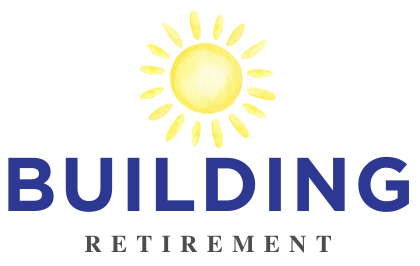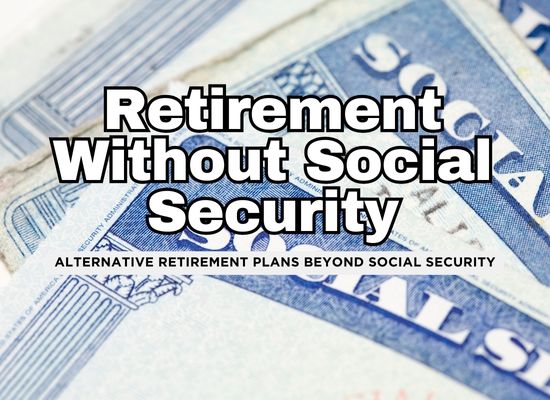For decades, Americans have relied on Social Security and Medicaid as core pillars of retirement security. These programs provide essential income and healthcare coverage for millions of retirees. But with rising national debt, political debates, and an aging population, discussions about cutbacks or restructuring are becoming more frequent.
If Social Security benefits are reduced or Medicaid coverage becomes more limited, what will retirement look like? More importantly, what can individuals do now to ensure financial stability and access to healthcare in the future?
While no one can predict exactly what will happen, it’s essential to have backup strategies. Here are three powerful ways to prepare for a comfortable retirement, even if these government programs are scaled back.
1️⃣ Build a Diversified Passive Income Portfolio
A retirement plan that doesn’t rely on government benefits should include multiple income streams. Passive income allows retirees to cover expenses without depending on Social Security.
Key Strategies for Passive Income:
- Dividend Stocks: Investing in dividend-paying companies provides consistent income that can grow over time. Reinvesting dividends early and shifting to withdrawals in retirement can create a stable cash flow.
- Rental Properties: Owning income-generating real estate can provide a monthly revenue stream. Even with property management fees, rental income can help replace lost Social Security checks.
- REITs (Real Estate Investment Trusts): For those who don’t want the hassle of managing property, REITs offer real estate exposure with dividend payouts.
- Annuities: Fixed or indexed annuities provide guaranteed income over a set period, mimicking the structure of Social Security payments but under private management.
- Side Businesses or Royalties: Selling digital products, licensing creative works, or owning a small automated business can generate ongoing income in retirement.
Example Scenario:
A couple in their 40s invests in a mix of dividend stocks and rental properties. By the time they retire, they generate $4,000 a month from dividends and rental income, allowing them to live comfortably without relying on Social Security.
2️⃣ Strengthen Private Healthcare Coverage and HSA Savings
If Medicaid is reduced, securing affordable healthcare becomes a major concern. Retirees without proper coverage could face overwhelming medical expenses.
Key Strategies for Healthcare Protection:
- Health Savings Accounts (HSAs): Contributing to an HSA while working allows for tax-free savings that can be used for medical expenses in retirement. Unlike traditional savings, HSA funds are not taxed when used for qualified healthcare costs.
- Long-Term Care Insurance: Medicaid currently covers long-term care for low-income seniors. If that changes, long-term care insurance can prevent catastrophic expenses from nursing homes or in-home care.
- Medicare Supplement Plans (Medigap): If government healthcare funding is cut, having a private Medicare supplement can help cover out-of-pocket costs, preserving retirement savings.
- Direct Primary Care (DPC) Memberships: Instead of traditional insurance, some retirees opt for direct-pay healthcare models, where they pay a flat monthly fee for physician services and preventive care.
Example Scenario:
A self-employed worker maximizes their HSA contributions every year and invests the funds. By retirement, they have over $200,000 in tax-free healthcare savings, which they use to cover out-of-pocket medical costs instead of relying on Medicaid.
3️⃣ Extend Working Years with Flexible or Part-Time Income
Many retirees choose to continue working in some capacity, not only for financial stability but also to stay active and engaged. If Social Security benefits are reduced, delaying full retirement or earning part-time income can fill the gap.
Ways to Earn in Retirement Without Overworking:
- Consulting or Freelancing: Decades of experience in any field can be monetized through part-time consulting, contract work, or freelance projects.
- Part-Time or Seasonal Work: Some retirees take on low-stress, flexible jobs, such as remote customer service, tutoring, or hospitality work.
- Teaching or Coaching: Sharing knowledge through online courses, private coaching, or community college teaching can provide extra income.
- Passive Digital Income: Writing e-books, launching a paid newsletter, or creating an online course can generate recurring income with minimal effort.
Example Scenario:
A retiree who spent 30 years in marketing launches a consulting business for small startups, working just 10 hours per week while earning $3,000 per month. This allows them to retire comfortably without depending on full Social Security benefits.
4️⃣ Maximize Tax-Advantaged Retirement Accounts
One of the most effective ways to prepare for a retirement without Social Security is to fully utilize tax-advantaged savings accounts. These accounts help grow wealth faster by deferring or eliminating taxes on contributions, growth, or withdrawals.
Key Strategies for Maximizing Retirement Accounts:
- Contribute the maximum allowed amount to a 401(k) or similar employer-sponsored retirement plan, taking advantage of employer matching if available.
- Invest in a Roth IRA, where contributions are made with after-tax dollars, allowing for tax-free withdrawals in retirement.
- Use a traditional IRA for tax-deductible contributions and potential lower tax rates upon withdrawal.
- If self-employed, open a SEP IRA or Solo 401(k) to build significant retirement savings while benefiting from tax deductions.
Example Scenario:
A middle-income earner consistently maxes out their Roth IRA and 401(k) contributions over 30 years. By retirement, their tax-free Roth IRA account has grown to over $500,000, providing a reliable income source that doesn’t depend on Social Security.
5️⃣ Reduce Cost of Living and Optimize Expenses
A key component of financial independence in retirement is reducing expenses to ensure savings and investments last longer. Cutting unnecessary costs, downsizing, and optimizing spending can provide financial security even without government benefits.
Key Strategies for Cost Reduction:
- Relocate to a more affordable city or state with lower taxes and living costs.
- Consider downsizing to a smaller home or moving to a senior-friendly community.
- Reduce discretionary spending on non-essential items such as luxury vehicles, high-end dining, or unused subscriptions.
- Focus on debt elimination before retirement to avoid ongoing financial obligations.
Example Scenario:
A couple living in an expensive metro area decides to sell their home and move to a low-cost state with no income tax. By doing so, they cut their housing expenses by half and eliminate state tax burdens, making their retirement savings last longer.
6️⃣ Invest in Inflation-Protected and Low-Risk Assets
If Social Security benefits shrink, retirees will need investment strategies that maintain purchasing power while minimizing risk. Investing in assets that keep up with inflation and provide stable returns is essential for long-term security.
Key Strategies for Inflation Protection and Stability:
- Invest in Treasury Inflation-Protected Securities (TIPS), which adjust for inflation and provide secure returns.
- Diversify with assets like dividend-paying stocks and real estate to generate steady income.
- Consider commodities such as gold or silver as a hedge against economic downturns.
- Maintain a balanced portfolio with low-risk bonds to ensure financial stability even in market downturns.
Example Scenario:
A retiree allocates a portion of their portfolio to TIPS, real estate, and dividend stocks. This ensures they continue earning passive income that adjusts for inflation, helping them maintain their lifestyle even without Social Security.
Securing Your Financial Future Without Social Security
Planning for retirement without relying on government programs requires strategic income diversification, smart investing, and expense management. By creating multiple income streams, maximizing tax-advantaged accounts, and preparing for healthcare costs, retirees can maintain financial independence regardless of policy changes.


